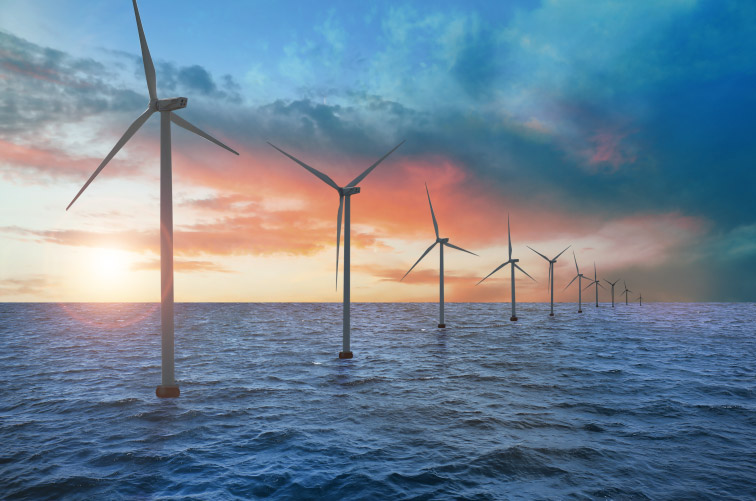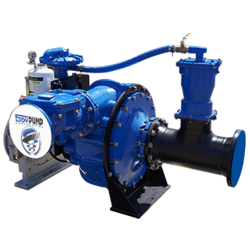Application of EDDY Pump in Wind Energy Generation



Application of Our Slurry Pumps in Wind Energy Generation

- Foundation Installation: Offshore wind turbines require sturdy and stable foundations, often consisting of large quantities of concrete and other materials. The slurry transport pump transports and injects the cementitious grout or bentonite-based slurry into the boreholes while installing foundation structures. These slurries ensure proper fixation and stability for the turbine towers.
- Cable Protection: Offshore wind farms require extensive underwater cables to transmit the generated electricity to the onshore grid. Submersible slurry pumps create and inject a protective slurry around the wires to shield them from external forces and corrosion, ensuring their long-term reliability and performance.
- Cooling Systems: Wind turbines, especially those in warmer climates or with higher power capacities, require efficient cooling systems to prevent overheating essential components. Slurry pumps can circulate cooling slurry, removing excess heat and maintaining the turbine’s optimal operating temperatures.
- Mud and Sediment Management: During the construction and maintenance of wind turbines, dredging activities are often required to remove sediment, mud, and debris from the seabed. Slurry pumps facilitate dredging, efficiently transporting the slurry mixture away from the turbine foundations and work areas.
- Environmental Protection: Offshore wind farms must adhere to strict environmental regulations. Submersible slurry pump handle and transport slurry mixtures containing soil, sediments, and other contaminants during environmental monitoring activities, ensuring compliance with environmental standards.
- Desilting and Dewatering: Submersible slurry pumps are utilized for desilting and dewatering during construction, enabling efficient excavation and water removal from construction sites.
- Material Transfer: High solids pump transfers various materials within the wind farm site, such as moving reclaimed materials from the seabed to designated areas or transporting backfill materials during construction.
CALL FOR SALES OR SUPPORT
If you need help with Pump Selection, Sales or Engineering Support
Call 619-345-5446

Application of EDDY Pump’s Hydraulic Dredging in Nuclear Power Production

- Seabed Preparation: Submersible hydraulic dredge is employed to prepare the seabed before installing the foundations of offshore wind turbines. Dredging removes soft sediments and levels the seabed to create a stable and even surface for installing turbine structures.
- Trenching for Cables: Offshore wind farms require submarine cables to transfer electricity from the turbines to the onshore power grid. Submersible hydraulic dredge is used to create trenches on the seabed, where these cables are safely buried to protect them from potential damage caused by marine activities and ensure an efficient cable management system.
- Maintenance Dredging: Over time, sediments and other materials can accumulate around the foundations of offshore wind turbines, leading to reduced efficiency and stability. Hydraulic dredger removes these sediments and maintains the desired clearance around the turbine structures.
- Harbor and Channel Dredging: Hydraulic dredgers may be necessary for onshore wind farms near ports or harbors to maintain access channels and berthing areas for construction and maintenance vessels. Dredging ensures safe and efficient navigation for the transportation of equipment and personnel to and from the wind farm site.
- Cable Route Maintenance: Submarine cables connecting offshore wind turbines to onshore substations may require maintenance due to sedimentation or other factors. Submersible hydraulic dredge allows for clearing cable routes, ensuring uninterrupted power transmission.
- Erosion Control: Hydraulic dredging can be used in erosion-prone areas around wind turbine foundations. By dredging and redistributing sediments, erosion can be mitigated, preserving the integrity of the turbine structures and promoting long-term stability.
- Reclamation: In some instances, hydraulic dredging may be utilized to reclaim areas of the seabed for the construction of new offshore wind farm facilities or other renewable energy projects.
- Offshore Wind Farm Expansion: Hydraulic dredging assists in seabed preparation for new turbine foundations and cable routes when expanding existing offshore wind farms.
- Foundation Decommissioning: When a wind farm reaches the end of its operational life, hydraulic dredging may remove the turbine foundations and related infrastructure.




